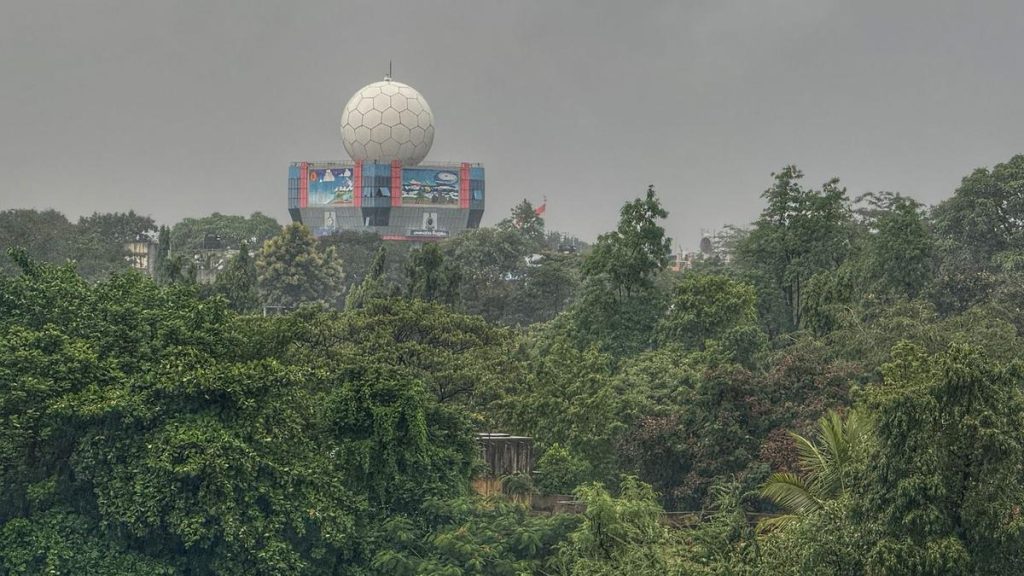Hyderabad Doppler Radar Data Accessibility Sparks Debate: Public Right to Information vs. Responsible Communication
A recent controversy surrounding public access to the India Meteorological Department’s (IMD) Hyderabad Doppler radar data has ignited a national debate, pitting the public’s right to information against the need for responsible communication of complex weather data. The incident unfolded when independent weather communicator T. Balaji, widely recognized as the “Telangana Weatherman,” brought to light the restricted access to the Hyderabad Doppler radar data on social media platform X. This revelation sparked immediate concern and discussion, as the radar is a crucial tool for tracking rainfall and storm movement, vital for both public safety and informed decision-making during extreme weather events.
Balaji argued that restricting access to publicly funded data was akin to “stealing crops from farmers,” emphasizing the public’s inherent right to access information they finance. He expressed concerns that the lack of access would hamper emergency response efforts and hinder the public’s ability to prepare for severe weather events. While acknowledging that the restriction would not directly affect his forecasts, which rely on private subscriptions and paid tools, Balaji stressed the broader implications for public safety and community preparedness.
The IMD Hyderabad Centre, however, offered a contrasting perspective. Officials maintained that the restriction was not a recent development but a longstanding measure implemented to prevent the misuse and misinterpretation of highly technical radar data. A senior IMD scientist argued that individuals without the necessary expertise could misinterpret the data and disseminate alarming information on social media, leading to unnecessary panic and placing undue pressure on the IMD. The scientist cited a recent instance where the weather over Telangana was unscientifically compared to a “pressure cooker,” illustrating how inaccurate interpretations could fuel public anxiety.
The IMD officials emphasized that the restriction was not intended to silence genuine weather forecasters but rather to curb the spread of misinformation. They stressed that the radar remains operational and data continues to be accessible to authorized agencies. The IMD argued that providing regular weather forecasts to the public should suffice, obviating the need for direct access to raw radar data.
IMD Hyderabad head K. Nagaratna offered a different explanation, attributing the temporary lack of access to a technical glitch related to BSNL connectivity. She confirmed that internal access to the data remained unaffected but external users may have experienced difficulties. Nagaratna reiterated that the public’s primary need is for accurate forecasts, which the IMD consistently provides, and not raw, complex radar data.
Regarding access for government departments like the Disaster Management Control Room and GHMC, Nagaratna indicated that these agencies likely have access through internal channels, although specific details would need to be confirmed with the respective sections. She highlighted the presence of the Hyderabad Disaster Response and Asset Protection Agency (HYDRAA) control room within the IMD Hyderabad premises, where stationed personnel receive real-time weather information.
The incident has exposed the complex interplay between data accessibility and responsible communication, particularly in the context of weather forecasting, which directly impacts public safety. While proponents of open access emphasize the public’s right to information and its potential to empower individuals and communities, the IMD’s stance underscores the importance of preventing the spread of misinformation and ensuring accurate interpretation of complex scientific data. The debate raises questions about the optimal balance between transparency and control, and how to best equip the public with the information they need while mitigating the risks of misinterpretation and unnecessary alarm. The incident has highlighted the need for clear communication protocols and public education initiatives to enhance understanding of meteorological data and its responsible use. As weather information plays an increasingly vital role in disaster preparedness and risk management, finding a sustainable solution that addresses both public access and data integrity is crucial. This ongoing discussion will likely shape future policies regarding access to publicly funded weather data and how such information is communicated to the public. The balancing act between transparency and responsible communication remains a challenge, particularly in the age of rapidly disseminated information through social media. The controversy surrounding the Hyderabad Doppler radar data serves as a case study with national implications, potentially influencing how meteorological information is shared and interpreted across India. This incident serves as a vital reminder of the responsibility that comes with accessing and disseminating information, particularly when it concerns public safety and wellbeing. The delicate balance between public access to data and the need for responsible communication must be carefully navigated to ensure that information empowers rather than alarms.


